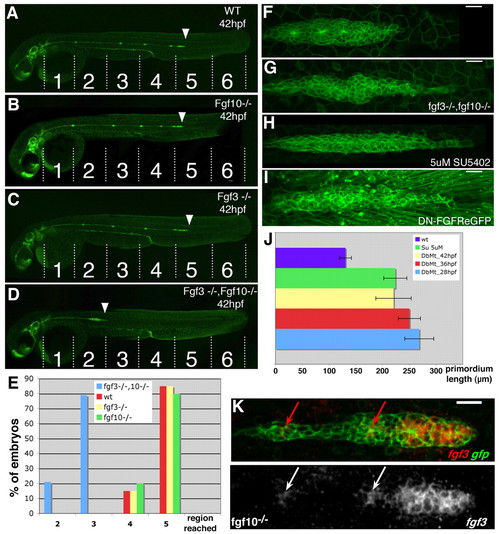|
FGF signaling is required for the migration and subdivision of the primordium into rosettes. (A-E) Lateral line migration in wild-type (A), fgf10 mutant (B), fgf3 mutant (C) and fgf3;fgf10 double mutant (D) cldnb:gfp embryos at 42 hpf, quantified in E (n=18 for each genotype). (F-I) Representative primordia of wild-type (F), fgf3;fgf10 double mutant (G), SU5402-treated (H) and heat-shock induced dn-fgfr1 (I) embryos showing the stretched shape and the lack of rosettes resulting from the loss of Fgf activity. (J) The primordium length in each context (9 wild-type, 17 SU5402-treated and 7 fgf3;fgf10 double mutant primordia were measured). (K) fgf3 expression is expanded in fgf10 mutants. Arrows point to the ectopic dots of fgf3 expression in the center of rosettes. Anterior is to the left. Scale bar: 20 μm.
|

